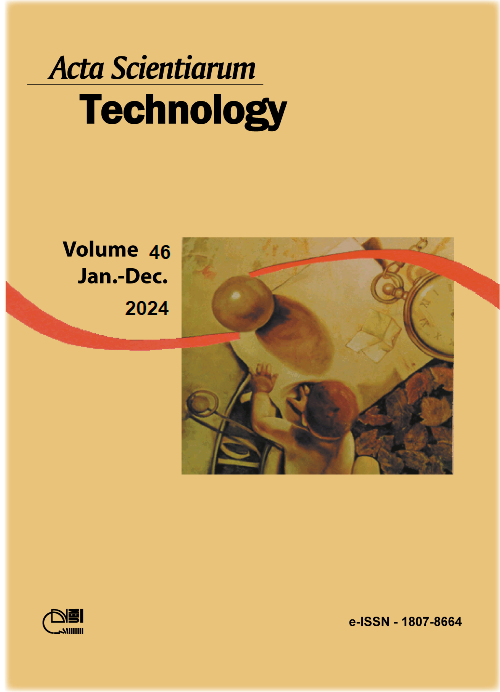A modeling strategy for the simulation of box sections with layered shell elements
DOI:
https://doi.org/10.4025/actascitechnol.v46i1.65754Keywords:
girders; concrete structures; finite-element modeling.Abstract
This paper presents a numerical strategy to model box sections from bridge girders using horizontal layered shell finite elements. The basic idea is to avoid the construction of more computational expensive meshes based on the use of folded shell and brick finite elements. The numerical strategy imposes the deactivation of those layers related to empty spaces within the bridge cross-section. The performance of this technique is explored by means of two demanding practical applications related to bridge structures with constant and variable deck thicknesses. The first application deals with the static truck load test of the Caynarachi Bridge, located in Peru, and for which measured field data exists, while the second application is related to the construction stage analysis of a box bridge structure including time effects due to concrete creep, shrinkage and steel relaxation. The results demonstrate that the studied technique acceptably correlates with the measured field data,expressed in terms of vertical displacements,with correlation coefficients exceeding 0.94.Additionally, the outcomes align well with the results of other numerical techniques, allowing applicants to use this simplified modeling approach in daily design office.
Downloads
Downloads
Published
How to Cite
Issue
Section
License
DECLARATION OF ORIGINALITY AND COPYRIGHTS
I Declare that current article is original and has not been submitted for publication, in part or in whole, to any other national or international journal.
The copyrights belong exclusively to the authors. Published content is licensed under Creative Commons Attribution 4.0 (CC BY 4.0) guidelines, which allows sharing (copy and distribution of the material in any medium or format) and adaptation (remix, transform, and build upon the material) for any purpose, even commercially, under the terms of attribution.
Read this link for further information on how to use CC BY 4.0 properly.











8.png)




